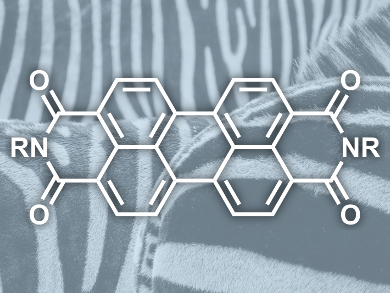Edge Detection: Crucial in Nature
Being able to discern the outline of predator or prey is probably what kept our ancestors alive and is the underlying reason why some animals such as zebra and cheetah evolved stripes and spots – their patterned pelts make it difficult to see the edges.
In the digital age, finding edges is an important process in computer pattern recognition, in improving the quality of a digital photograph, or in manipulating other visual data for esthetic or engineering applications. Most graphics packages have “edge detection”, “outline”, and similar tools built in to help the user pick out the appropriate pixels. Of course, being nothing more than a line of pixels, means that the outline of an object in an image contains far less data than the entire picture. Still, edge detection must have been sufficient for our ancestors attempting to distinguish between the outline of a lion and the outline of an antelope. Indeed, edge detection seems to occur in our eyes and the low data density means that our brains can respond rapidly almost as soon as the photons reach the retina, allowing the classic fight or flight option to be made within a split second.
At the cellular level, it is the ganglion cells in the retina that process the signals from the rods and cones that detect light. These cells are wired together in groups so that they produce an overall signal only if the central cell is illuminated while the surrounding cells are in the dark. The opposite type is also present. The signal from these ganglion cells is then passed up through several more intermediaries and then into the optic nerve for transmission to the brain.
Simple Molecular Logic Systems Instead of Complex Algorithms
A. Prasanna de Silva, Queen’s University of Belfast, Northern Ireland, UK, and his colleagues – pioneers and experts in the construction of molecular logic units – have focused their attention on edges. “We have now taught a mixture of three compounds to carry out edge detection”, he told ChemistryViews.org. “Up to now, small molecules could only emulate small logic gate arrays, which we have been happy with.” Logic gates are the building blocks of computation, taking a stream of 1 s and 0 s and carrying out a logical operation on them – the AND, NOT, NOR, XOR, etc. of Boolean logic. An array of such gates works in sequence and in parallel with interconnections and feedback loops to make calculations, or in the case of de Silva’s work, to process chemical or photonic signals.
De Silva points out that in the world of the proverbial “silicon chip” a small array of logic gates cannot itself carry out edge detection, for that we need a complete computer running software, such as the aforementioned graphics software with a built-in algorithm for processing the pixels and determining which make up the edge of an object and which do not. Instead of a graphics package, de Silva’s team have used a photo acid generator (triphenylsulfonium chloride, originally developed by computer giant IBM for etching features into wafers of silicon to make their chips), a fluorescent pH sensor (e.g., perylenetetracarboxylic-3,4,9,10-bis[2′-(morpholino)ethyl]imide, pictured), and a sodium carbonate pH buffer.
Using Acidity, Diffusion, and Fluorescent Sensors to Detect Edges
The team shines ultraviolet light through a mask on to a filter paper, which has been soaked in a solution of the above three compounds and partially dried. The irradiated areas slowly become acidic, which switches ‘on’ the fluorescence of the sensor. This gives a ‘positive photograph’ of the mask. The protons from the acid built-up in this way start to slowly diffuse into the regions that were not irradiated with ultraviolet, so that the fluorescent sensors in the adjacent border get switched ‘on’. As the irradiation progresses, there is a build-up of a photoproduct which quenches the fluorescence of the sensor. This causes the irradiated region to lose its fluorescence, reverting to the dark state it was in at the start of the experiment.
“We are left with the border visualized with bright fluorescence whereas the irradiated region is dark again,” explains de Silva. “The bulk of the non-irradiated areas remain dark. The edge of the mask has thus been detected by the molecular activity. This is the first time that small molecules have been used to perform a computational task that happens deep within our human nature,” de Silva says. “This is also the first time that small molecules have been used to emulate a graphical computer program.”
Towards Molecular Computers
The team suggests that this is a significant jump in the complexity of tasks within the reach of molecular logic arrays. Arrays built previously were able to carry out impressive, yet rudimentary logic and sensing tasks. This latest complex computational task is a demonstration of a principle that nudges us somewhat closer to the notion of a programmable molecular computer. “The current achievement and the availability of dense molecular memories also demonstrate the considerable information-handling capabilities of small molecules,” de Silva concludes.
“In a globalized world flooded by sophisticated hi-tech gadgets, the fact that edge detection – a computational problem that is crucial for living systems and challenging for engineering – can be performed with unsophisticated chemical compounds, moist paper supports, and inexpensive equipment is outstanding,” Alberto Credi, University of Bologna, Italy, told ChemistryViews.org. “Indeed, the clever combination of simple physico-chemical properties and processes of the investigated compounds enables a functional integration that ultimately leads to the execution of a non-trivial task that goes well beyond basic Boolean logic. In my opinion, this research represents an impressive demonstration that computational paradigms based on molecules are highly promising for real-world applications.”
- Building pH Sensors into Paper-Based Small-Molecular Logic Systems for Very Simple Detection of Edges of Objects,
Jue Ling, Gaowa Naren, Jessica Kelly, Thomas S. Moody, A. Prasanna de Silva,
J. Am. Chem. Soc. 2015.
DOI: 10.1021/jacs.5b00665




